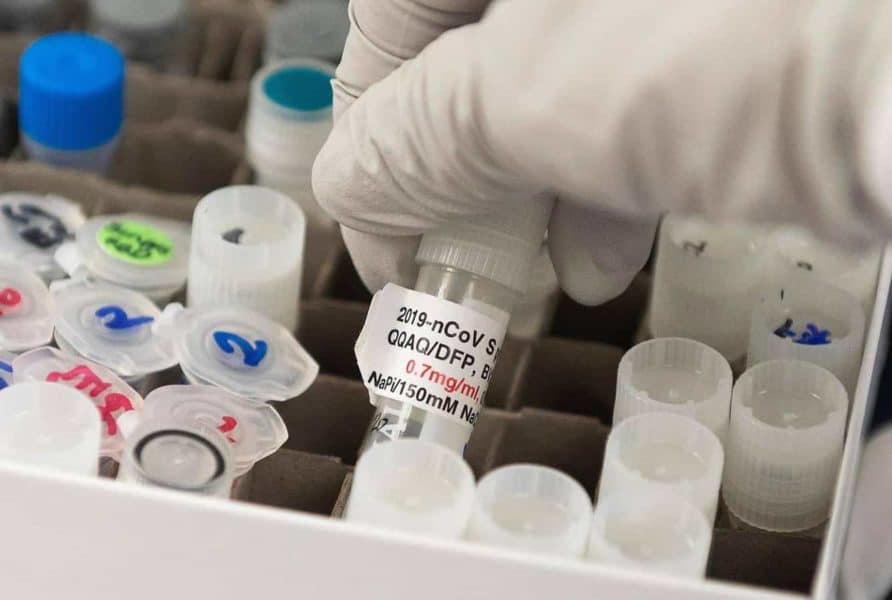The world is fighting two pandemics at this moment: the coronavirus disease and the pandemic of misinformation about it. The fatalities of the COVID-19 pandemic are measurable, but the effects of the infodemic are so stealthy that its insidious impact cannot be quantified.
My social media presence on scientific topics was confined to my LinkedIn circle of scientists. Writing time was solely reserved for academic research. It is a heresy to suggest otherwise. But in the past two months I have been very active on Facebook, Twitter and WhatsApp, trying to stop people from spreading falsehoods about the coronavirus. Usually, it’s been a “yellow penalty card” politely requesting people to reconsider the information they post. However when people persist, it is a “red penalty card” — a scathing strong reprimand. Many people have questioned my approach as a self-appointed referee. But I believe as a scientist and specifically as a virologist, it is my social obligation to prevent the dissemination of both misinformation and disinformation.
People are confused with the complexity of the information; terminology such as herd immunity, antiviral drugs and asymptomatic. Early in the pandemic, even my well-informed sisters didn’t get it when I tried to explain the importance of flattening the curve for the health care system. Exasperated, I finally did a video call and on a whiteboard drew stick figures in different colors representing healthy and sick people. Using a hypothetical example, I said, “If four people are infected and each of them in turn spread it to four more people, the virus can be transmitted exponentially as depicted by this rising line on the graph. My sister interjected “then if we practice social distancing then we can prevent this rapid sharp rise and flatten the curve.”
I realized how important it is to explain these abstract concepts through visual stories. This prompted me to make short video clips with illustrations on “What is a virus?” and “How does a vaccine work in the body?” — and post these on social media platforms.
The United Nations Secretary-General António Guterres said, the world is facing “a dangerous epidemic of misinformation” about COVID-19 and the only vaccine is to re-establish public trust. The UN has therefore set up a special Communication Response initiative “to flood the Internet with facts and science while countering the growing scourge of misinformation.”
Exacerbating the public fear and anxiety is the polarized media coverage of the pandemic. A recent Pew Study, (“Cable TV and COVID-19: How Americans perceive the outbreak and view media coverage differ by main news source”) found that the knowledge and understanding of the pandemic differed between cable news viewers depending on which news channel (Fox News, MSNBC or CNN ) they followed. Scientific information about the biology and origin of the virus, transmission and therapies should not be tainted with ideological and political innuendo. Such disinformation amid a public health crisis is alarming.
The need of the hour is for scientists to make our voices heard above these partisan views. We who know the science need to communicate it to the public via op-eds, blogs, podcasts and social media platforms. As scientists we desire that results of our research should ultimately benefit society. However today, it is our scientific understanding and scientific temper of observation, questioning and analysis that is most essential to influence public opinion. One such initiative is “Ask a Scientist,” an interactive tool that answers questions from the public about COVID-19; a collaborative effort between the Federation of American Scientists and Governance Lab at New York University.
As a scientist who is a part of this initiative, I have come across the most basic questions like “Is it safe to receive or send flowers?” to insightful questions about “whether the coronavirus can become dormant in our body and be reactivated like the herpes virus.” I feel that people genuinely want to understand the science behind the pandemic but are dismayed by the diverse views being disseminated.
Science is based on facts and evidence. However nowadays to make sensational headlines, misleading reports about potential treatments for COVID-19 are being splashed in the media. This creates a false sense of hope and undermines health guidelines by the World Health Organization and Centers for Disease Control and Prevention. In the current scenario, scientists need to convey hard facts; that we still do not have a Food and Drug Administration-approved intervention for COVID-19.
The virus is “novel” and easily transmittable. Vaccines that are needed to protect us from the coronavirus are still in the works, and we are hopeful of getting a vaccine in the next 12 to 18 months. Therefore, our behavioral patterns (physical distancing and good hygiene practices) including a healthy lifestyle are the only shields against the virus. However scary this message may sound to the public, reliable information is needed so that people do not fall prey to the speedy “miracle cures” being promised by many opportunistic stakeholders.
While health care professionals are fighting the COVID-19 pandemic, we scientists need to complement their efforts by being warriors fighting the pandemic of misinformation and disinformation. Scientists as social media influencers can transmit the truth about coronavirus at the push of a button.
Sona Chowdhury, Ph.D. is a virologist (associate specialist) in the Division of Infectious Diseases, Department of Medicine, University of California, San Francisco.


